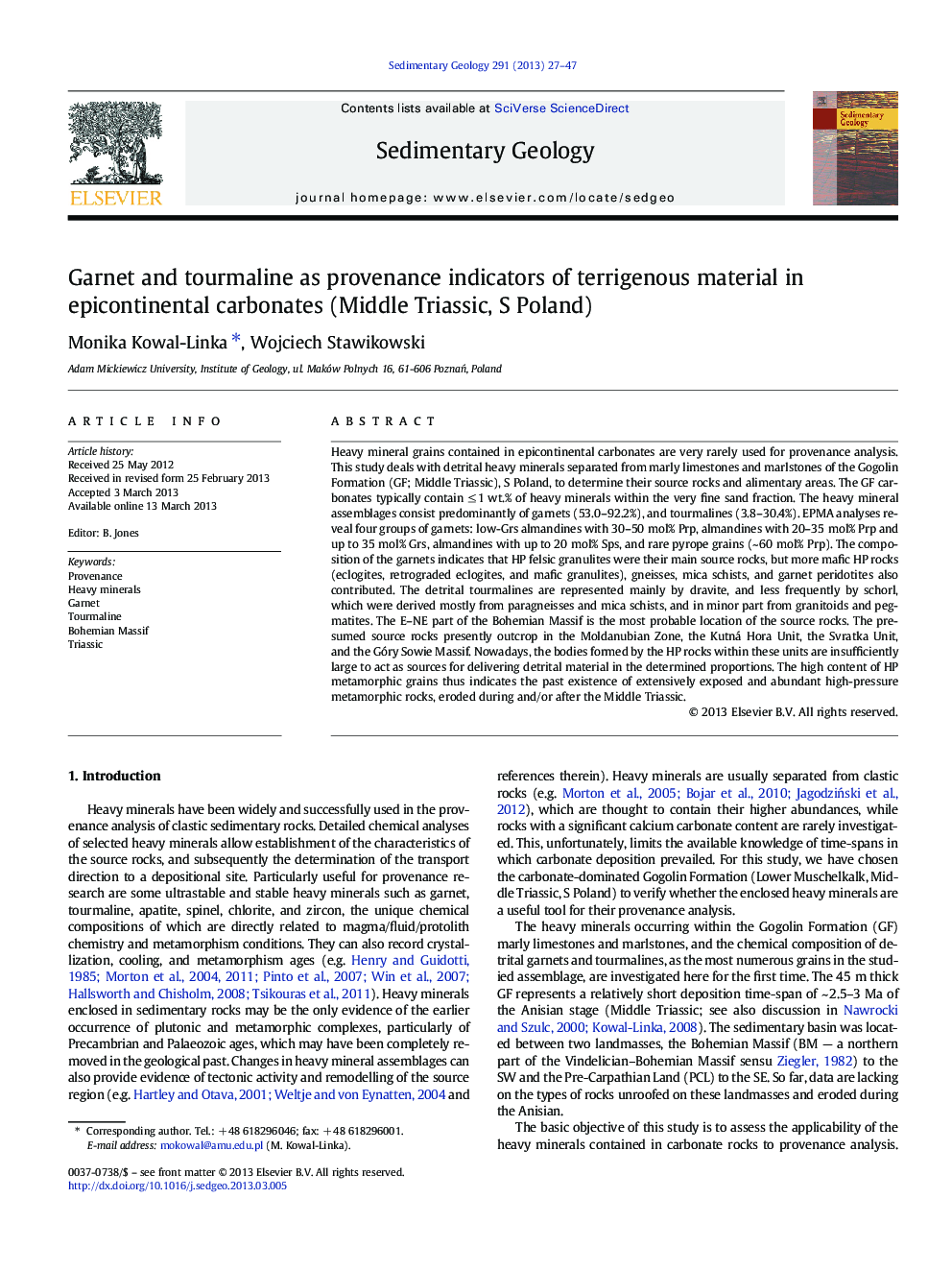| کد مقاله | کد نشریه | سال انتشار | مقاله انگلیسی | نسخه تمام متن |
|---|---|---|---|---|
| 4689561 | 1636072 | 2013 | 21 صفحه PDF | دانلود رایگان |

• Heavy-minerals study has been performed on mid-Triassic carbonate rocks in S Poland.
• HP felsic granulites along with mafic HP rocks were the main source for garnets.
• Mica schists and paragneisses were the main source rocks for tourmaline grains.
• The source rocks were located in the E–NE margin of the Bohemian Massif.
• Heavy minerals from carbonate rocks provide arguments for palaeogeographic studies.
Heavy mineral grains contained in epicontinental carbonates are very rarely used for provenance analysis. This study deals with detrital heavy minerals separated from marly limestones and marlstones of the Gogolin Formation (GF; Middle Triassic), S Poland, to determine their source rocks and alimentary areas. The GF carbonates typically contain ≤ 1 wt.% of heavy minerals within the very fine sand fraction. The heavy mineral assemblages consist predominantly of garnets (53.0–92.2%), and tourmalines (3.8–30.4%). EPMA analyses reveal four groups of garnets: low-Grs almandines with 30–50 mol% Prp, almandines with 20–35 mol% Prp and up to 35 mol% Grs, almandines with up to 20 mol% Sps, and rare pyrope grains (~ 60 mol% Prp). The composition of the garnets indicates that HP felsic granulites were their main source rocks, but more mafic HP rocks (eclogites, retrograded eclogites, and mafic granulites), gneisses, mica schists, and garnet peridotites also contributed. The detrital tourmalines are represented mainly by dravite, and less frequently by schorl, which were derived mostly from paragneisses and mica schists, and in minor part from granitoids and pegmatites. The E–NE part of the Bohemian Massif is the most probable location of the source rocks. The presumed source rocks presently outcrop in the Moldanubian Zone, the Kutná Hora Unit, the Svratka Unit, and the Góry Sowie Massif. Nowadays, the bodies formed by the HP rocks within these units are insufficiently large to act as sources for delivering detrital material in the determined proportions. The high content of HP metamorphic grains thus indicates the past existence of extensively exposed and abundant high-pressure metamorphic rocks, eroded during and/or after the Middle Triassic.
Journal: Sedimentary Geology - Volume 291, 1 June 2013, Pages 27–47